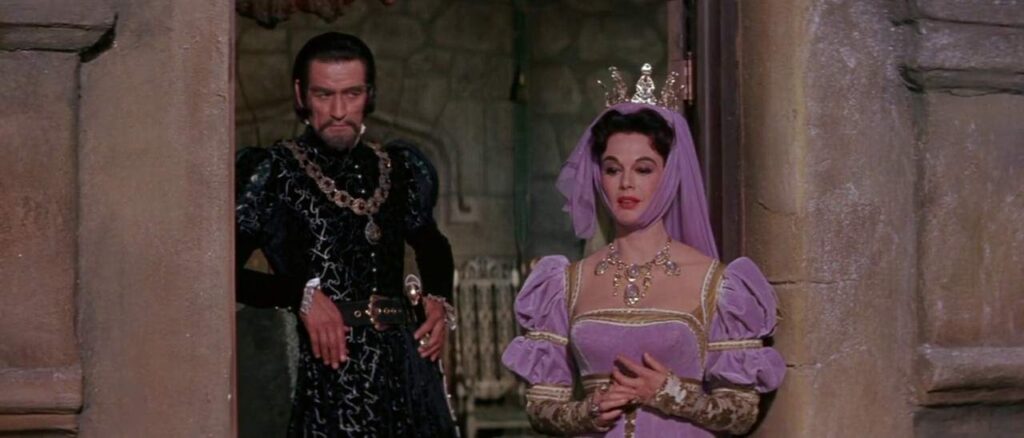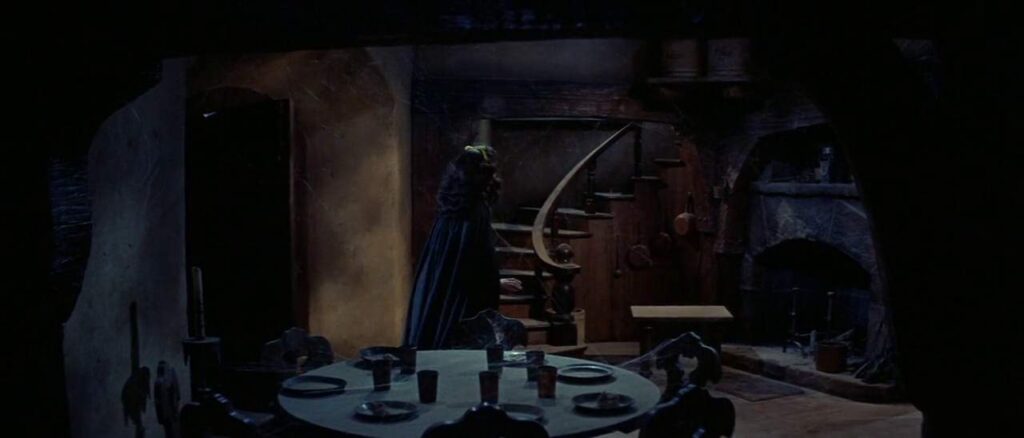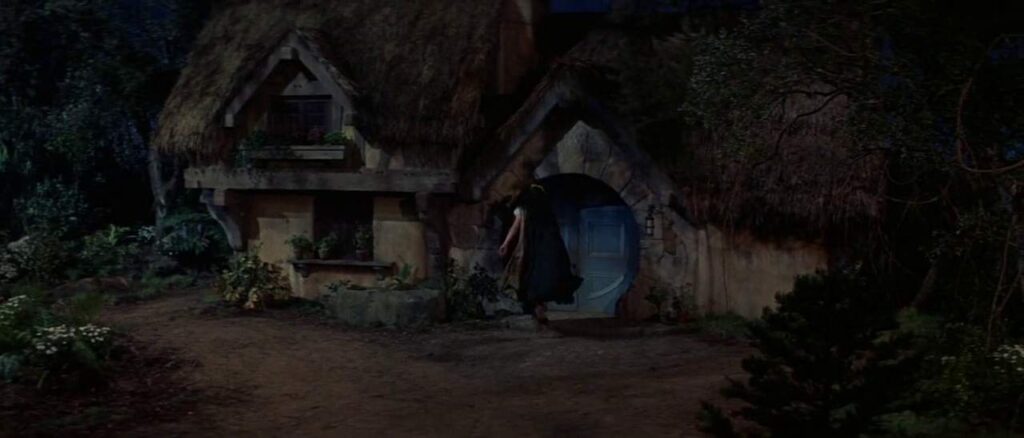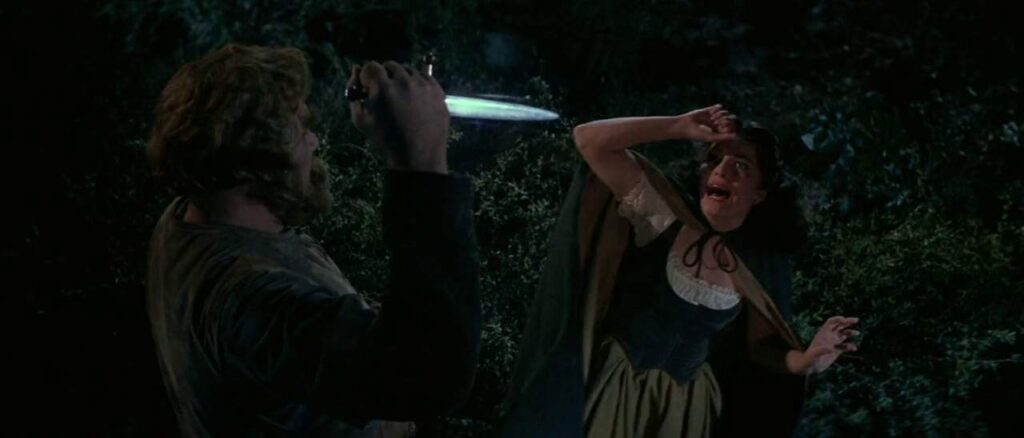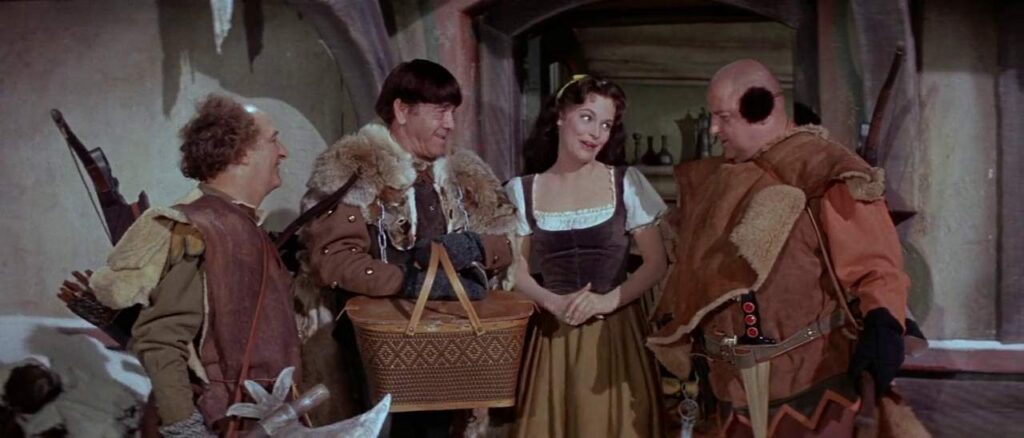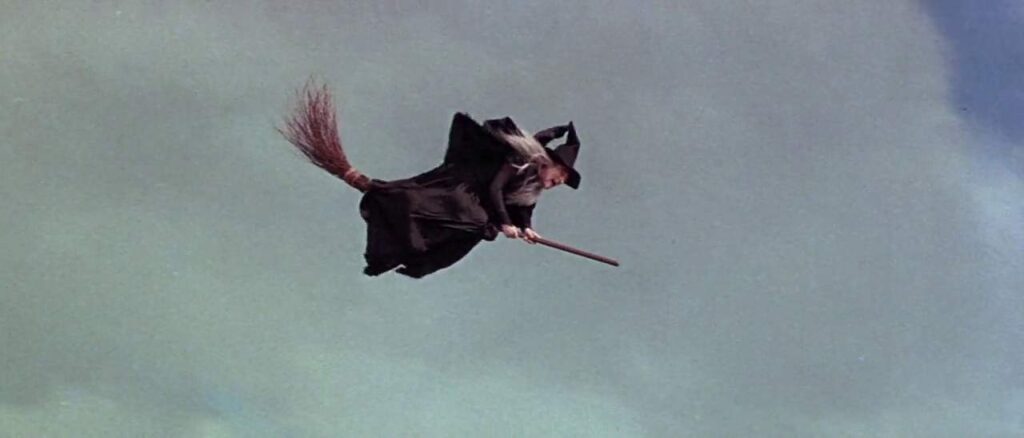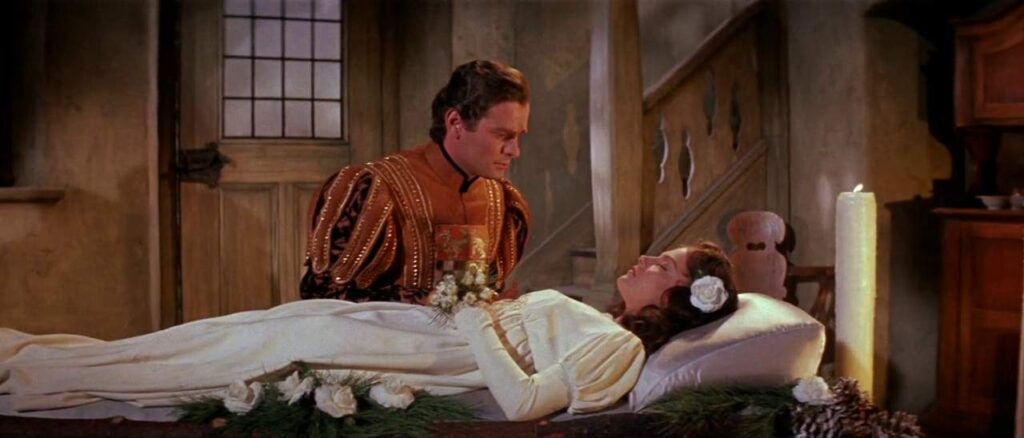Production information
Release dates: May 26, 1961 (USA)
Studios: Twentieth Century Fox & Chanford Productions
Director: Walter Lang
Writers: Noel Langley, Elwood Ullman & Charles Wick
Composer: Lyn Murray, Harry Harris & Earl K. Brent
Producer: Charles Wick
Cinematography: Leon Shamroy
Art Direction: Maurice Ransford & Jack Martin Smith
Editor: Jack W. Holmes
Main Cast
Snow White: Carol Heiss
Curly-Joe: Joe DeRita
Larry: Larry Fine
Moe: Moe Howard
The Prince: Edson Stroll
The Queen: Patricia Medina
Count Oga: Guy Rolfe
Rolf: Michael David
Hordred the Huntsman: Buddy Baer
King Augustus: Edgar Barrier
Captain: Peter Coe
Snow White’s nurse: Marie Blake
Narrator: Paul Frees
Voice of the Magic Mirror: Paul Frees
Back to References to Snow White from other studios
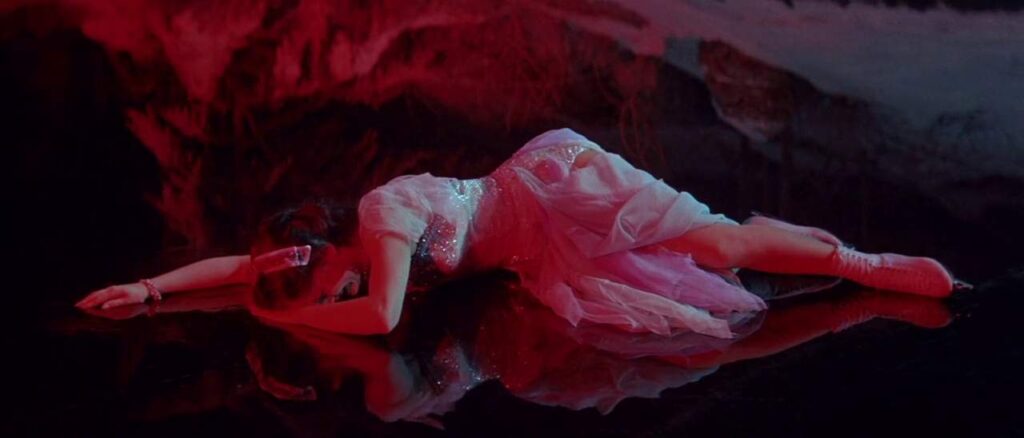
Snow White on Ice Skates
This is a particularly original concept: the story of Snow White where she ice skates, and where the Seven Dwarfs are replaced by a trio of comedians, the Three Stooges. They began their career with Columbia in the 1940s, and by the early 1960s, they were enjoying renewed popularity thanks to the reruns of their films on television. It was then decided to have them star in their first color and Cinemascope movie.
Although Disney bought 20th Century Fox many years after the release of this film, this production seemingly has little to do with Walt Disney’s Snow White and the Seven Dwarfs. However, not only is it inevitably influenced by the famous animated feature, but there are also several people, story elements, and visual details directly related to it.
First of all, the film opens with a richly illuminated book, a habit instituted by Snow White. There’s also a shot of an owl scaring Snow White in the forest, though the incongruous addition of a cougar is undeniably an original twist. The Queen, unlike in the tale but consistent with Walt Disney’s version, only visits the Dwarfs’ house once, and her only weapon against the young Princess is the poisoned apple, omitting the comb and the lace from the original story. She also transforms into a witch through a magic potion, although she’s closer to the typical fairytale witch with a pointed hat and a broom that she can fly on. She even transforms again later into a dated depiction of a gypsy peddler.
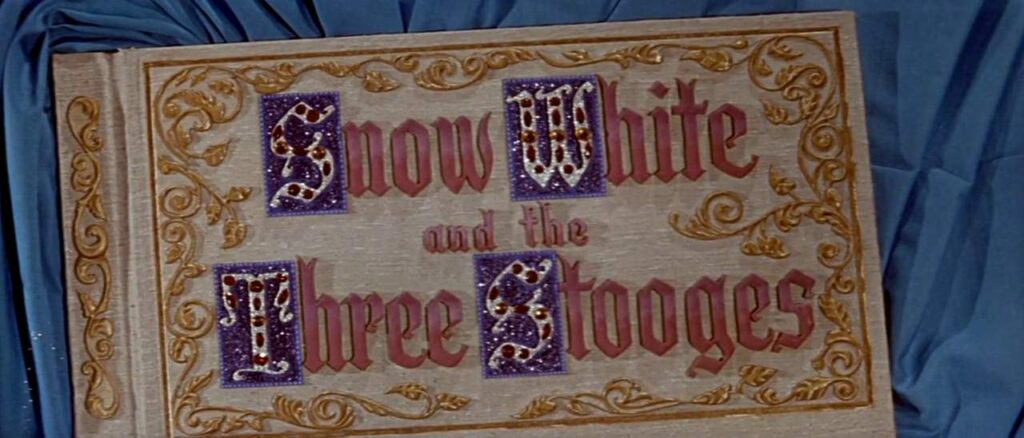
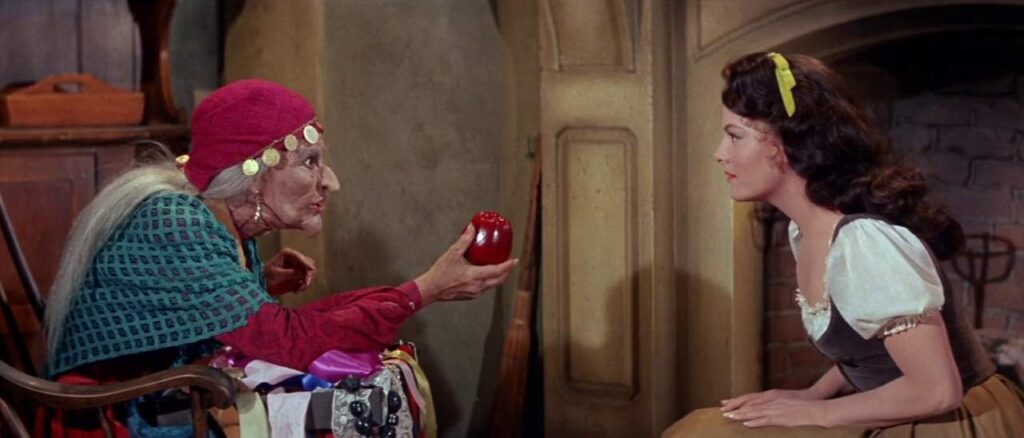
The young girl herself wears a bow in her hair and puffed sleeves, long after these 1930s-style adornments had fallen out of fashion. Finally, the film ends with an image of the main characters heading toward a castle bathed in light.
Other, less obvious elements link the film to the animated version. Snow White sings here with the voice of Norma Zimmer, and the Prince is voiced by Bill Lee. This duo can also be found, without their names being credited, in recordings of the record directed by Tutti Camarata and released just two years after this film came out. Staying in the musical realm, the score is conducted by Lyn Murray, one of the first composers to arrange an entire album of songs from Snow White in 1944 (with the Decca A 368). Lastly, Mel Blanc, who was reportedly considered for voicing Dopey, lends his voice in this film to the puppet Quinto, and Paul Frees, a frequent Disney collaborator, speaks for the Magic Mirror and narrates the story.

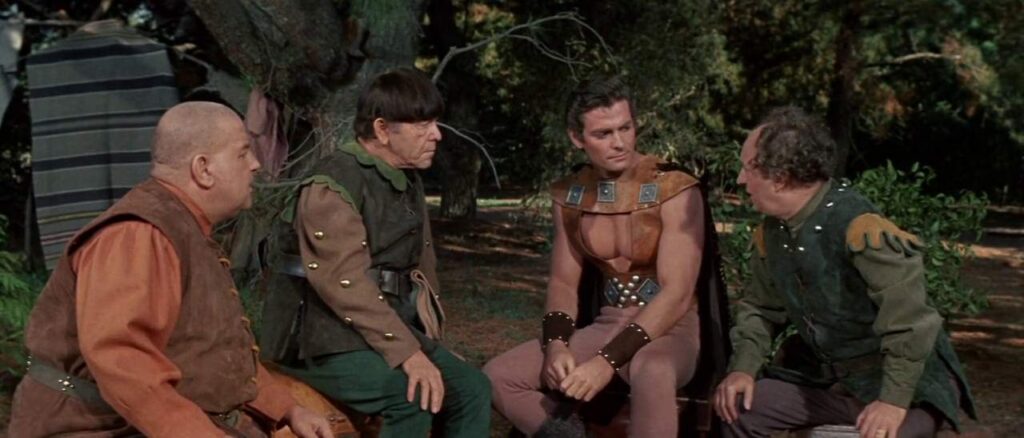
The lovely Carol Heiss, a gold medalist at the 1960 Olympics and multiple-time world champion, plays Snow White rather competently, despite her lack of experience as an actress.
Edson Stroll had already worked with the Stooges during the middle of his beefcake career, a role he perfectly handles here from his first scene, where he shows off his impressive pectorals in a low-cut outfit his female co-star might envy. The Prince actually plays a much larger role in this production, as the 1937 version was limited by the difficulty of animating a realistic character. In contrast, this film’s muscular heartthrob is given the luxury of having his backstory as an orphan developed from childhood and is even treated to dueling scenes reminiscent of The Adventures of Robin Hood. This is especially impressive considering one of the film’s constraints was allocating enough screen time to the aging trio, despite their total lack of connection to the canonical story.
The film’s large budget seems to have been somewhat thoughtless. Sure, it allows for Cinemascope and color images of ice skating on a lake with fabulous mirror effects, and it features stars from both the skating world and the screen, along with memorable songs. However, the very concept condemns the film to B-movie status, constantly alternating between overly earnest sentimentality and irreverence towards the tale, thanks to comedians forced to mock everything, including their own age. The film never truly commits to either side.
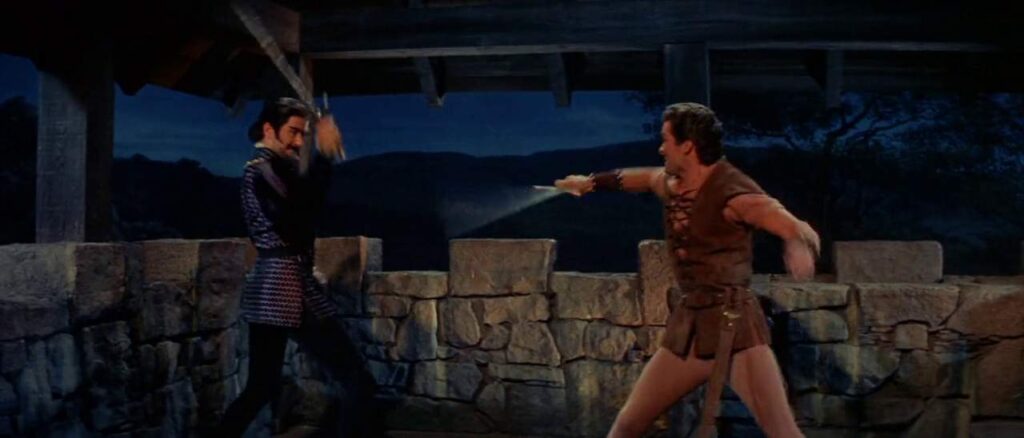
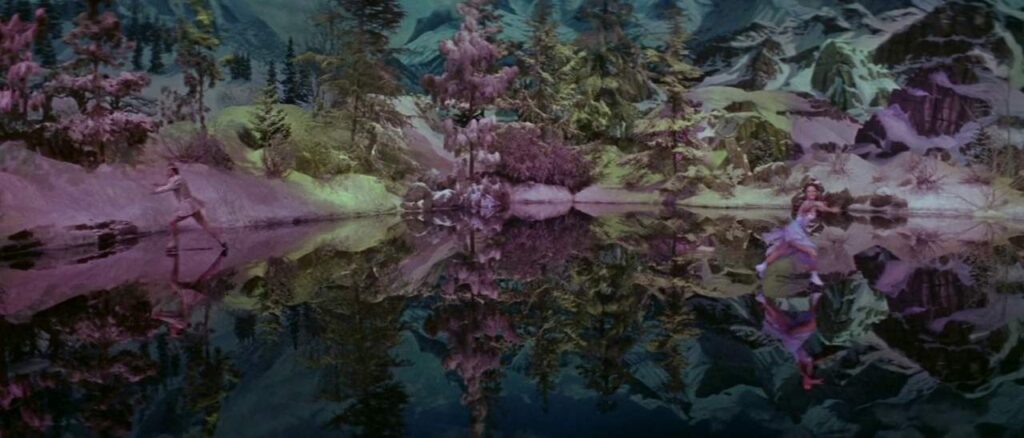
As a result, it was not a success in the United States and fared no better elsewhere. It was released in England under the alternate title Snow White and the Three Clowns, due to the lack of popularity of the main stars, and despite a release in Spanish-speaking countries and Italy, the film was never distributed in France. It wasn’t released there until 2012, on DVD, with a dubbing made specifically for the occasion.

